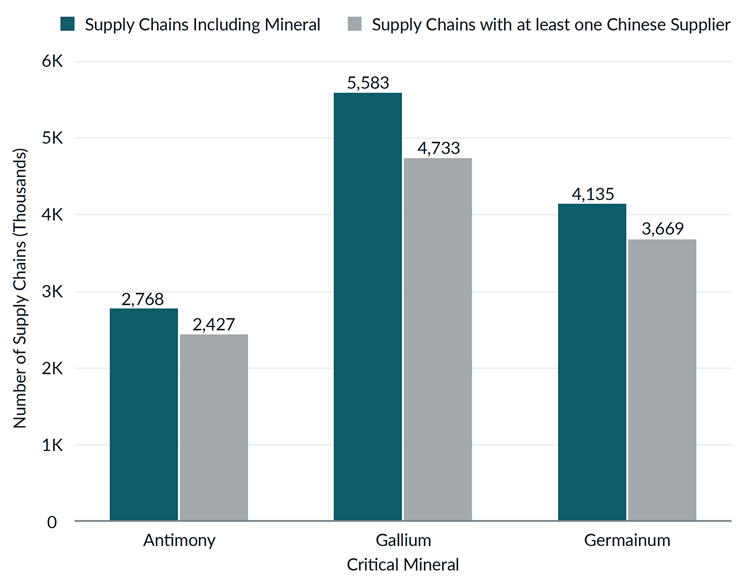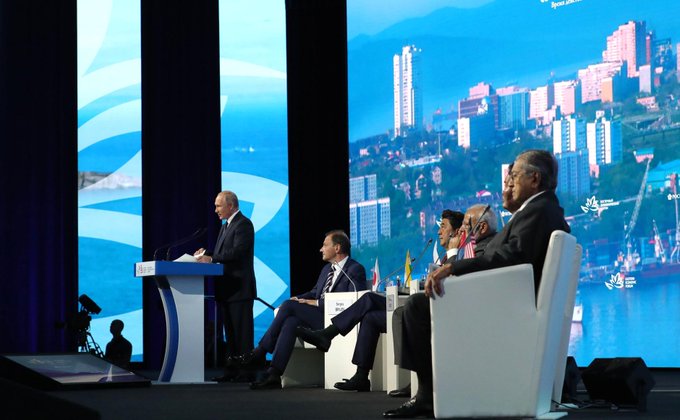Mistérios ibéricos (o apagão espanhol)
05/05/2025
Por Dimitris Konstantakopoulos

Não existem precedentes. Em dois países europeus — membros da UE e da NATO — a electricidade foi cortada repentinamente. Outros dois países, França e Marrocos, também foram afectados pelo apagão. A vida parou nos dois países mais alvejados: passageiros ficaram presos nos comboios, aeroportos mergulharam no caos e só em Espanha, os prejuízos estimados podem chegar a 800 milhões de euros.
Não se trata de um problema menor nem nada parecido, nunca aconteceu antes — um apagão total em dois países e interrupções parciais noutros dois. Até hoje, ninguém ofereceu uma explicação satisfatória para o ocorrido — ou mesmo uma hipótese plausível de como tal “acidente” poderia ter acontecido se, de facto, foi um acidente. É claro que, como sempre, alguns apressam-se a usar o episódio para promover as suas narrativas. A esquerda culpa a privatização — e, de facto, os novos proprietários privados estão mais interessados em aumentar os lucros do que em avolumar os custos, ao investir na segurança de rede. Os defensores da energia nuclear aproveitaram a oportunidade para argumentar que a culpa é da participação reduzida da energia nuclear na matriz energética nacional. A extrema direita aponta o dedo para as energias renováveis — essa é a sua acusação principal. Mas nenhum deles apresenta argumentos sólidos.
Afinal, vivemos numa era de irracionalidade, fanatismo e maniqueísmo/dicotomia – onde abundam vozes sonoras, mas as evidências e os raciocínios são escassos.
Mas se não foi um acidente misterioso, então foi um ataque cibernético, executado com uma estratégia de “choque e superioridade”. Se tal cenário for verdadeiro, bem-vindo ao admirável mundo novo da guerra cibernética.
É compreensível que a liderança espanhola tenha negado categoricamente essa possibilidade — tão categoricamente que parece estar relutante em iniciar a procura de um culpado, temendo, possivelmente, as complicações que poderiam surgir. Afinal, como se pode negar categoricamente tal possibilidade quando a causa exacta do acontecimento permanece desconhecida? Mesmo assim, o Governo não conseguiu convencer nem mesmo o Suprema Tribunal do país, que ordenou uma investigação sobre a possibilidade de um ataque cibernético, sem excluir nenhuma hipótese. Essa abordagem também foi adoptada pelas agências de Serviços Secretos de Espanha, incluindo o Centro Nacional de Criptologia e o Centro Nacional de Inteligência.
A possibilidade de um ataque cibernético foi suficientemente levada a sério, para se tornar cabeçalho dos principais meios de comunicação mediática internacionais. “Nenhuma prova de ataque cibernético” foi o título escolhido pelo The Guardian. Mas esse título também poderia ser lido ao contrário: “Nenhuma evidência de que não foi um ataque cibernético”. Se a possibilidade não fosse séria, não teria sido discutida e, muito menos, publicada nas primeiras páginas.
O cenário mais provável é que nunca saberemos com certeza o que realmente aconteceu. E se nunca descobrirmos, pode ser, precisamente, porque o que aconteceu é demasiado importante para ser divulgado.
Dois suspeitos
Se foi um ataque cibernético, quem poderia ter sido o responsável? O Politico, um meio de comunicação amplamente conhecido e bem informado, com grande influência no Ocidente, identifica dois possíveis culpados: Israel e Rússia. Como afirmou: “A oposição da Espanha à guerra de Israel em Gaza e seu apoio à Ucrânia contra a invasão russa tornaram-na num alvo importante de ataques cibernéticos.” https://www.politico.eu/article/spain-portugal-power-blackouts-energy-electricity/
A referência a Israel é ousada e incomum para os padrões ocidentais actuais, onde até mesmo a menor crítica a este país leva, frequentemente, a rápidas acusações de antissemitismo e à condenação pública. Por outro lado, embora não possa ser totalmente descartado, parece ser improvável, o cenário de um ciberataque russo. É verdade que a Espanha seguiu a postura anti-russa geral da NATO, mas o seu papel no conflito na Ucrânia tem sido secundário. Não está entre os países que pressionam mais agressivamente pela continuação da guerra da NATO. É governada por uma coligação de socialistas com a esquerda radical — esta última com muitas reservas em relação ao enorme programa de rearmamento europeu de Ursula von der Leyen. Se Moscovo quisesse e pudesse atacar, poderíamos questionar sobre o que ganharia visando a Espanha — e por que razão não atacar o Reino Unido, a França, a Alemanha, os países bálticos ou a própria Ucrânia?
Além do mais, se houvesse a menor indicio sólido de que a Rússia estava por trás do apagão, a Europa não teria explodido em condenação a Moscovo?
Alguns colegas espanhóis com quem conversamos sugerem que a referência do Politico à Rússia foi, provavelmente, incluída para que a menção a Israel não ficasse isolada. E acrescentam: se um meio de comunicação como o Politico fez tal sugestão sobre Israel, provavelmente tinha um motivo muito sério para fazê-lo. Afinal, os meios de comunicação da relevância do Politico mantêm, frequentemente, algum nível de ligação com os principais serviços secretos ocidentais. Claro que, se um grande país europeu como a Espanha sofresse realmente um ataque cibernético semelhante, não passaria despercebido pelos seus serviços secretos e nem, provavelmente, pelos dos outros estados da UE ou dos EUA. Portanto, os nossos colegas apontam que o artigo também pode ser lido como uma espécie de alerta.
Possíveis motivos e pré-condições
A razão provável que poderia levar Israel a tomar tal atitude é a postura altamente activa da Espanha a favor da Palestina, o que tem prejudicado bastante as suas relações com Tel Aviv. Madrid reconheceu o Estado palestino há um ano, juntamente com outros três países europeus. Há poucos dias, sob pressão da ala radical da esquerda nas suas fileiras, o governo Sanchez foi forçado a cancelar um importante contrato de compra de munições de Israel, citando as acções genocidas deste último.
Ao mesmo tempo, as autoridades espanholas reabriram o caso e estão a conduzir investigações, em colaboração com a França, sobre a hipotética vigilância do Primeiro Ministro Sanchez e de outros políticos espanhóis, usando o ‘spyware’ israelita Pegasus.
É importante ressaltar que esse mesmo sistema teria sido usado para espiar o Presidente francês Macron, um facto que diz muito sobre a correlação de poder entre a França e Israel https://www.reuters.com/technology/cybersecurity/spain-reopens-israeli-spyware-probe-sharing-information-with-france-2024-04-23/ ! O Pegasus também foi usado, juntamente com o software Kandiru, para vigiar dezenas de políticos catalães no escândalo Katalangate. O grupo de direitos humanos Irídia e a Anistia Internacional concluíram que os responsáveis por este caso, eram os chefes da empresa israelita NSO, que mais tarde tentaram encobrir os seus vestígios, aparecendo como chefes de várias empresas em Luxemburgo.
Desde o ano passado, os principais piratas informáticos israelitas estabeleceram-se em Barcelona, de onde coordenam as suas operações em toda a União Europeia https://www.haaretz.com/israel-news/security-aviation/2024-12-26/ty-article/.premium/israeli-hackers-flock-to-barcelona-as-spyware-industry-shifts/00000193-fec4-df5b-a9b3-fec5d9dc0000.
O facto de Israel estar agora sob o controlo de uma governação extremista e fanática, que busca expulsar ou eliminar imediatamente a população palestina — e tem todos os motivos para não se importar com as formalidades das “democracias ocidentais” — é certamente um factor que facilitaria a realização de tais acções internacionais, que em circunstâncias normais seriam consideradas aventureirismo extremo, especialmente contra dois Estados-membros da UE e da NATO. Israel também parece ter-se tornado uma das forças globais mais poderosas em vigilância e todas as formas de “guerra da informação”. Juntamente com os americanos, provavelmente organizou ataques cibernéticos contra os reactores nucleares do Irão, o ataque com pagers no Líbano, enquanto os oficiais das Forças Armadas israelitas foram colocados em posições-chave em todos os grandes gigantes da internet, como o Google.
(Conforme revelado pelo editor grego, Sr. Vaxevanis https://www.ieidiseis.gr/politiki/351413/vaxevanis-toylachiston-15-anthropoi-ekanan-tis-synakroaseis-gia-na-min-akoyei-oli-mera-ok-mitsotakis/ — e sem ser negado por ninguém — os oficiais israelitas também organizaram o escândalo condenável de vigilância na Grécia. Não podemos não levar em consideração que as revelações sobre este escândalo tenham surgido de agências americanas, que consideravam que os israelitas tinham ido longe demais.)
É claro que tudo o que escrevemos até agora, é, na melhor das hipóteses, raciocínio especulativo e analítico — indicações e não conclusões. Mas referimos esse mesmo raciocínio, porque consideramos importante que o público e aqueles que ainda se interessam pela segurança das nações europeias, estejam informados sobre o que está a ser discutido nos círculos mais sérios do próprio Ocidente.
O Papel de Jorge
Esta é uma boa oportunidade para lembrar que o odioso Tal Hanan, ou “Jorge”, um “empresário” israelita e antigo oficial (?) das forças especiais do exército israelita, ligado à Cambridge Analytica — empresa acusada de manipular milhões de utilizadores do Facebook para votar em Trump — assumiu a responsabilidade por ataques cibernéticos durante o período que antecedeu o referendo (não vinculativo) de independência da Catalunha em 2014. Esses ataques tiveram como alvo o governo local e vários sites que incentivavam as pessoas a votar no referendo. Também foram realizados ataques cibernéticos contra o site dos serviços médicos de emergência, contra a polícia catalã e contra o site interno do sistema judiciário catalão.
É necessário destacar que o papel de Jorge e da sua equipa na guerra cibernética e na manipulação da opinião pública — utilizando milhões de pontos de dados pessoais e outros métodos — foi exposto numa investigação conduzida por alguns dos maiores jornais do mundo. A sua equipe utilizou métodos de desinformação, pirataria cibernética e espionagem e, supostamente, influenciou 33 eleições em todo o mundo. www.theguardian.com/world/2023/feb/15/revealed-disinformation-team-jorge-claim-meddling-elections-tal-hanan
No entanto, o impacto de Jorge e da sua equipa durou pouco. “Alguém” incumbiu-se de fazer com que o assunto desaparecesse rapidamente do debate público. Quanto aos jornalistas, hoje em dia, a grande maioria é paga não para descobrir ou investigar — mas sim para permanecer em silêncio, para encobrir, não para descobrir. E, geralmente, se algo é revelado, é quando entram em choque, forças poderosas dentro do nosso Ocidente cada vez mais totalitário.
No coração do crescente autoritarismo global
Independentemente do que tenha acontecido ou não em Espanha, sobre a concretização do apagão, o certo é que os serviços secretos e as forças armadas de Israel — juntamente com as agências americanas — têm acesso privilegiado aos oligopólios que controlam cada vez mais o nosso mundo da internet e representam a vanguarda do autoritarismo ocidental emergente. E talvez os israelitas tenham um “sentido de propósito” ou “missão” ainda mais forte do que os próprios americanos e, muitas vezes, podem usar estes últimos para os seus objectivos.
Acredita-se que o relacionamento privilegiado do exército israelita com a Google dá-lhes acesso a dados de centenas de milhões de utilizadores. A Google colabora estreitamente — e colaborará ainda mais — com o exército israelita, que, assim, obterá um acesso ainda maior aos dados dos utilizadores. O mesmo se aplica ao Meta e ao Facebook. A aquisição da Wiz coloca a inteligência israelita no comando dos seus dados do Google. “Veteranos” da Unidade 8200 de Israel assumiram cargos de liderança importantes nas maiores empresas de tecnologia, como Google, Facebook, Microsoft e Amazon. https://www.defenddemocracy.press/the-former-israeli-spies-working-in-top-jobs-at-google-facebook-and-microsoft/
A Unidade 8200 é especializada em vigilância e colheita de dados encriminadores, e os seus agentes projectaram e instalaram o spyware Pegasus, que tem sido usado para monitorar dezenas de milhares de políticos em todo o mundo e, provavelmente, foi usado no assassinato do jornalista saudita Jamal Khashoggi.
Estes quatro gigantes da tecnologia, juntamente com a Palantir, de Peter Thiel — Thiel é a “Eminência Parda” de Trump e dos mentores dos seus planos autoritários — colaboram estreitamente e contribuem significativamente para os crimes que ocorrem na Palestina. https://www.defenddemocracy.press/tag/thiel-peter/
Traduzido do grego por Christian Haccuria














/https://www.niagarafallsreview.ca/content/dam/thestar/news/canada/2021/09/25/huawei-executive-meng-wanzhou-receives-warm-welcome-upon-return-to-china/_1_meng_wanzhou_2.jpg)












